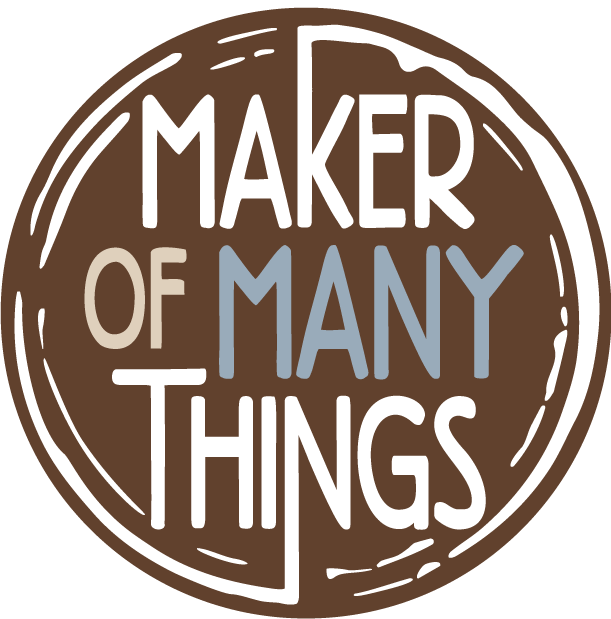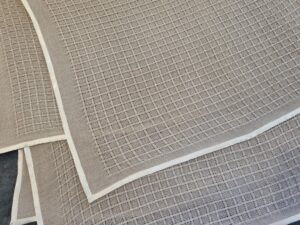I don’t think I will ever get tired of the feeling you get when you finish something that has taken so many hours to produce, especially when every step of the process has been enjoyable.
I made a blog post a few weeks ago to celebrate the completion of over a kilo of hand spun yarn that I made using one of our 2021 alpaca fleeces, blended with some merino fibre to add some elasticity and subtle earthy colour. Well, I can now share the finished knit that has been made from this beautiful blend.
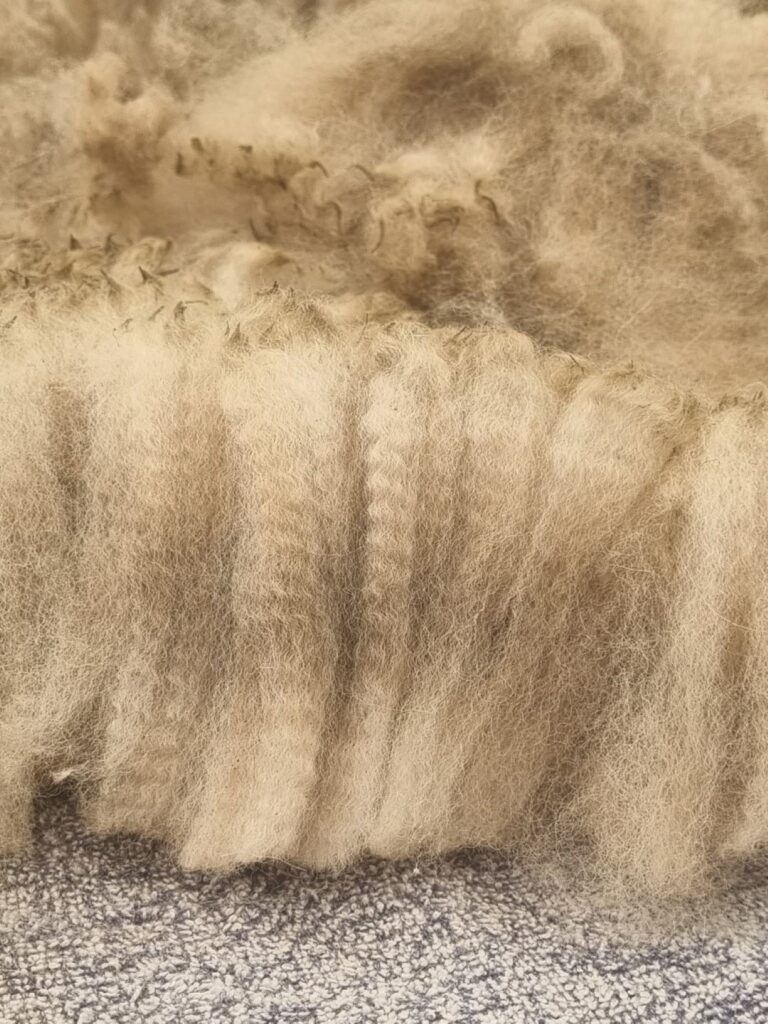

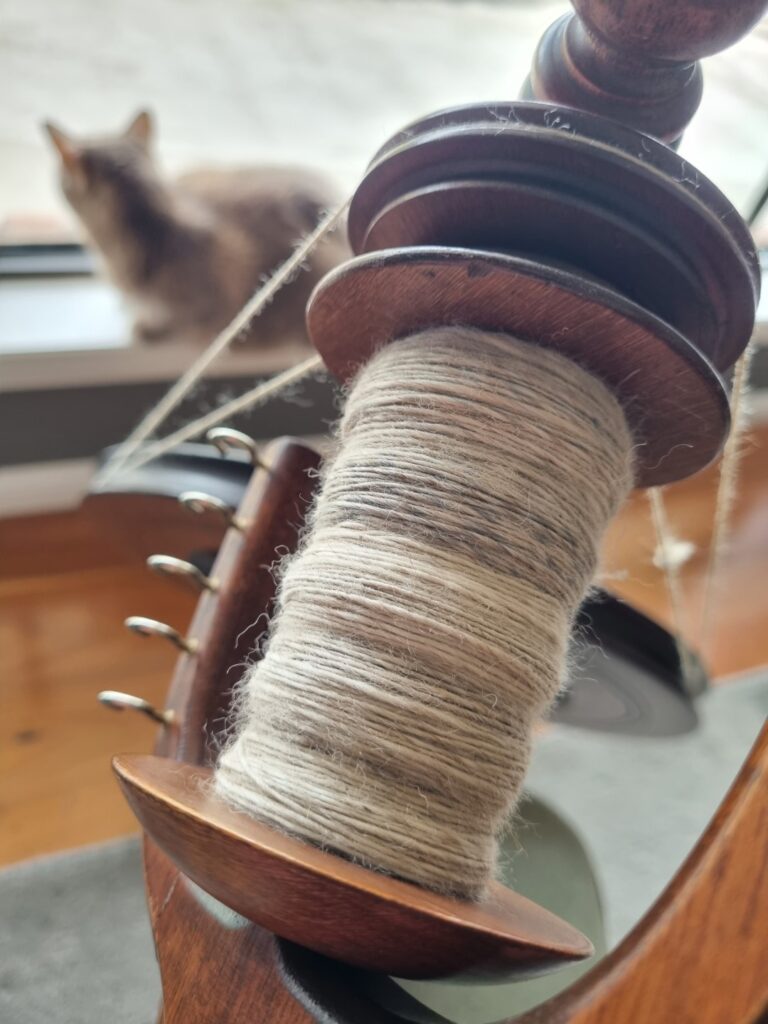

I ended up using a pattern from Drops Design, called the ‘Deep Woods Sweater’. This pattern is available for free on their website and has some great little tutorial videos with it for those of us that are trying something new.
This is only my second ever knitted garment, and it is the first time I have done a top down raglan or cable knitting, so the fact that I found this easy is an example of how good the free tutorial resources are on the internet!
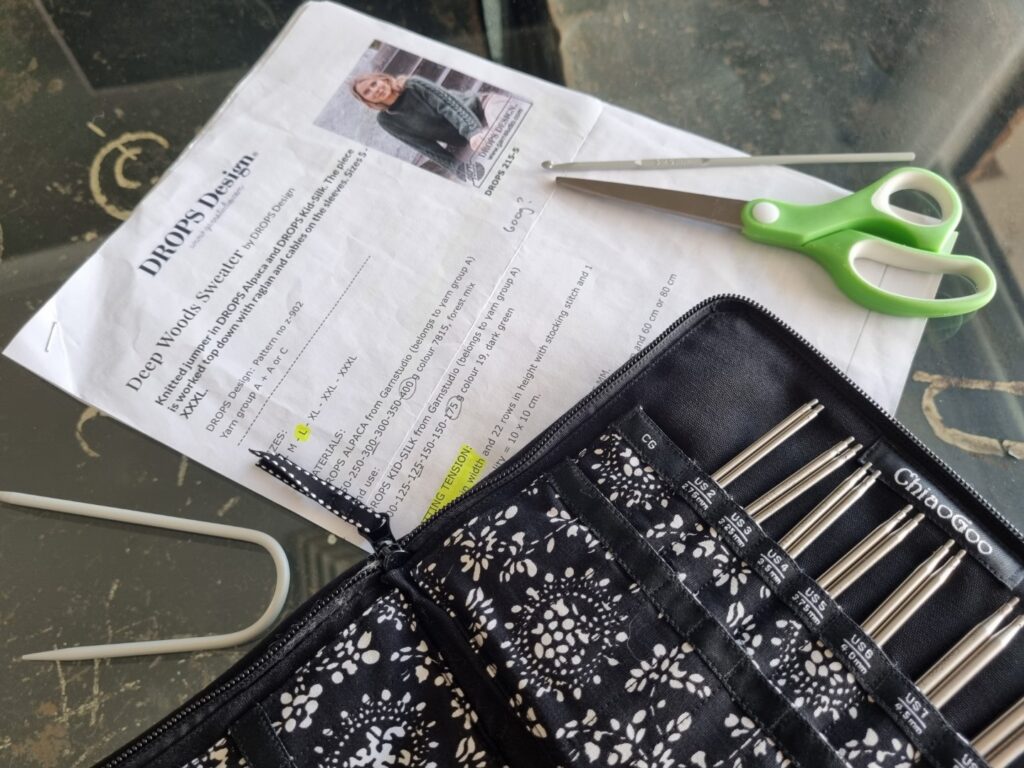
I wouldn’t say that I made mistakes, but you could say there was some poor decisions made during this project..
I got a bit over excited about the hand spun yarn, and made the silly decision to start my knitting project before I had finished spinning a suitable amount for a full jumper project. I guess it was kind of a good idea at first, because I tried a couple of other patterns before settling on the Deep Woods Sweater. My inexperience with knitting meant that I really had no idea how the colours were going to look when knitted up and whether the yarn would look better in a pattern or plain knit style.
I knitted the wavy pattern for along a bottom edge of a summer top, but it just didn’t look great with this colour. Then I tried another Drops Design pattern with a saddle shoulder style, but when I tried it on, it was way too wide across the chest and back. Because I had to unravel it all in order to fix that problem, I ended up deciding it was a bit boring anyway and moved on to my final choice – a good compromise of plain knit sections but a little bit of a feature in the knit pattern too.
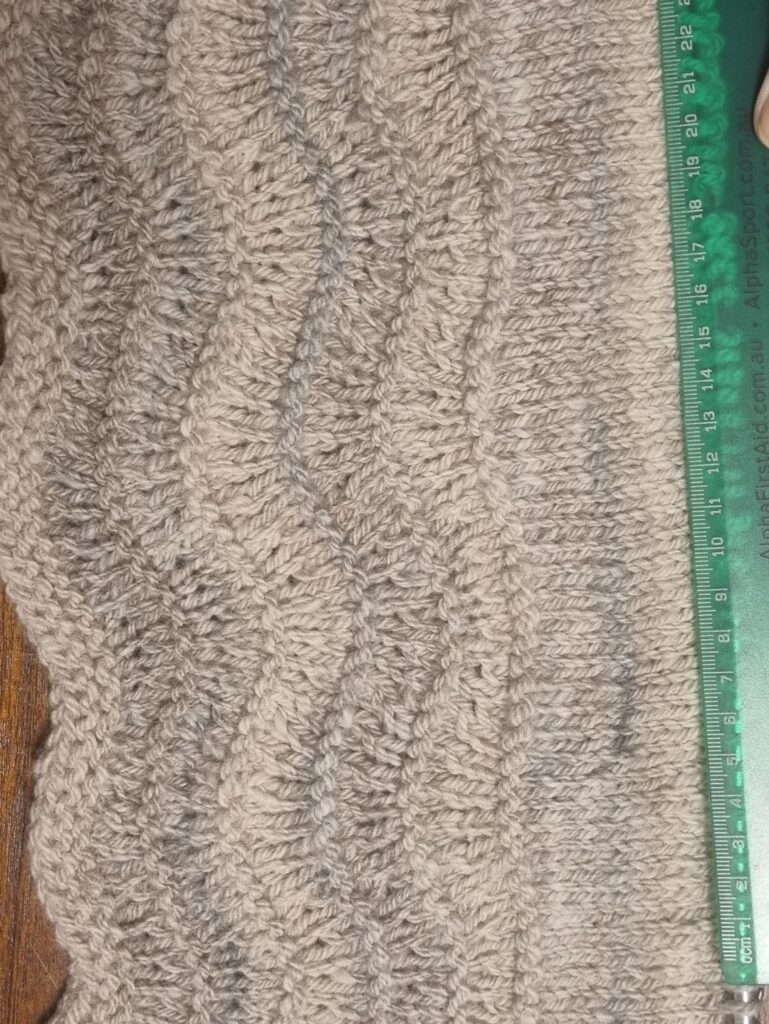
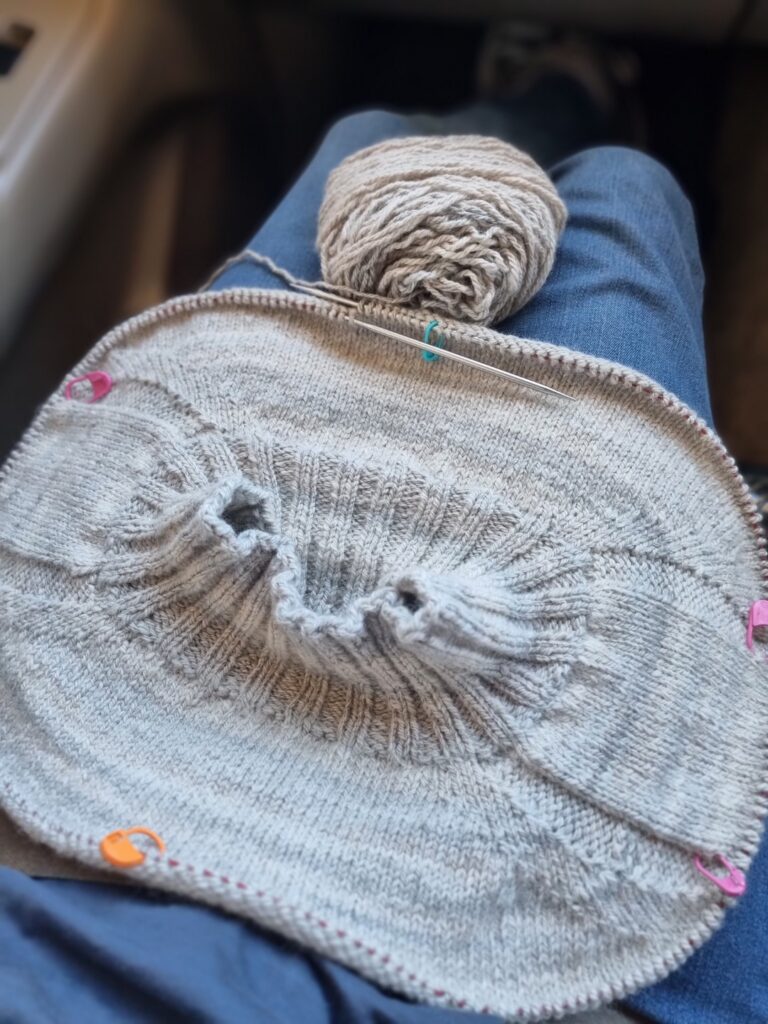
I did some swatches to ensure my needle size would give the correct gauge (number of stitches/rows in a 10x10cm square) and then had to calculate the amount of yarn I would need for the project. The pattern is written to suit a particular brand/style of yarn, so unfortunately the quantity listed there would not be right for me. I weighed my previous hand spun/hand knit project, the short sleeve ‘Ankers Summer Top’, and found that this was about 550g. Given that this project needed to be a bit longer in the body, looser and long sleeved, I figured I would need at least 700g – 1kg of fibre.
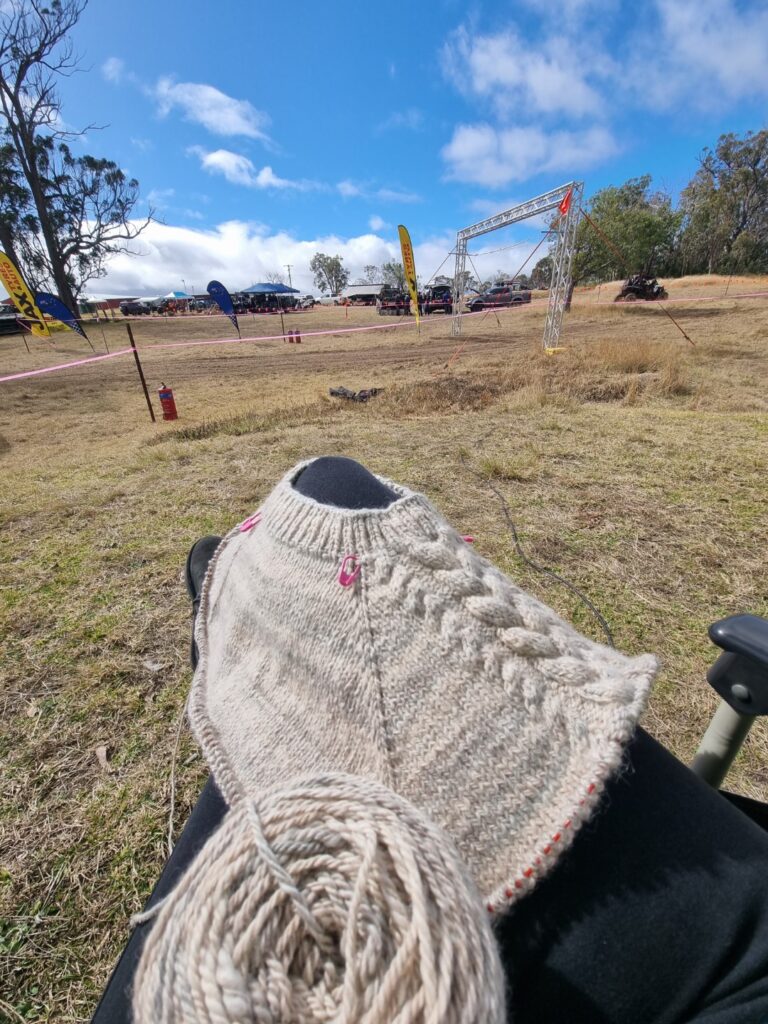
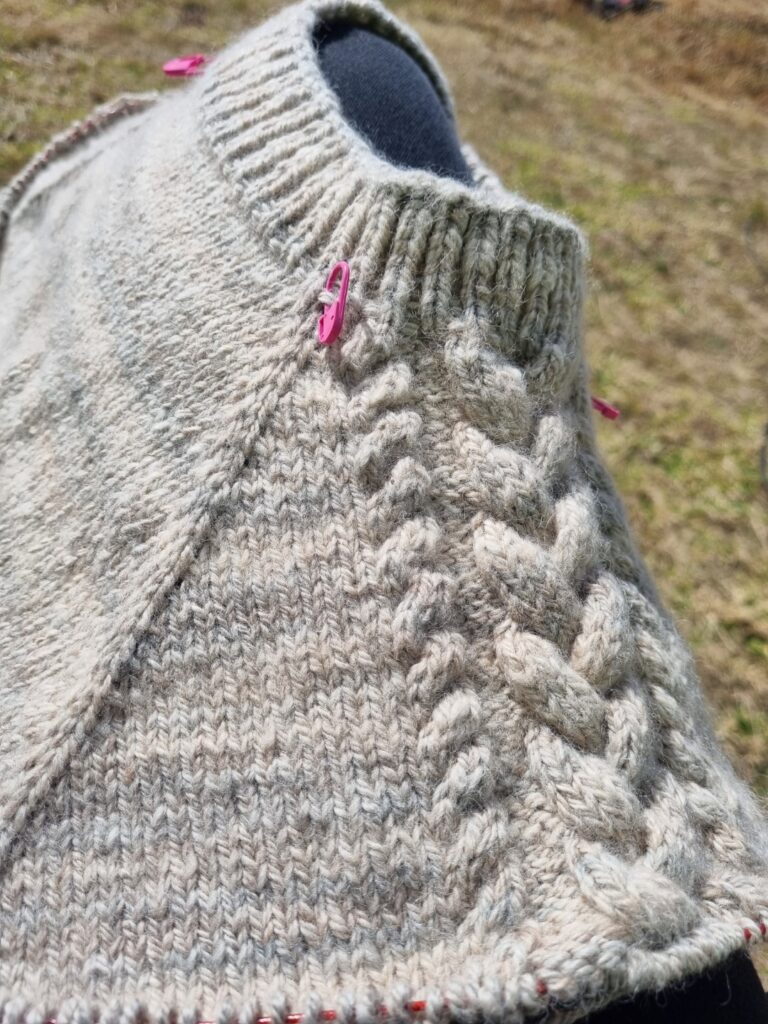
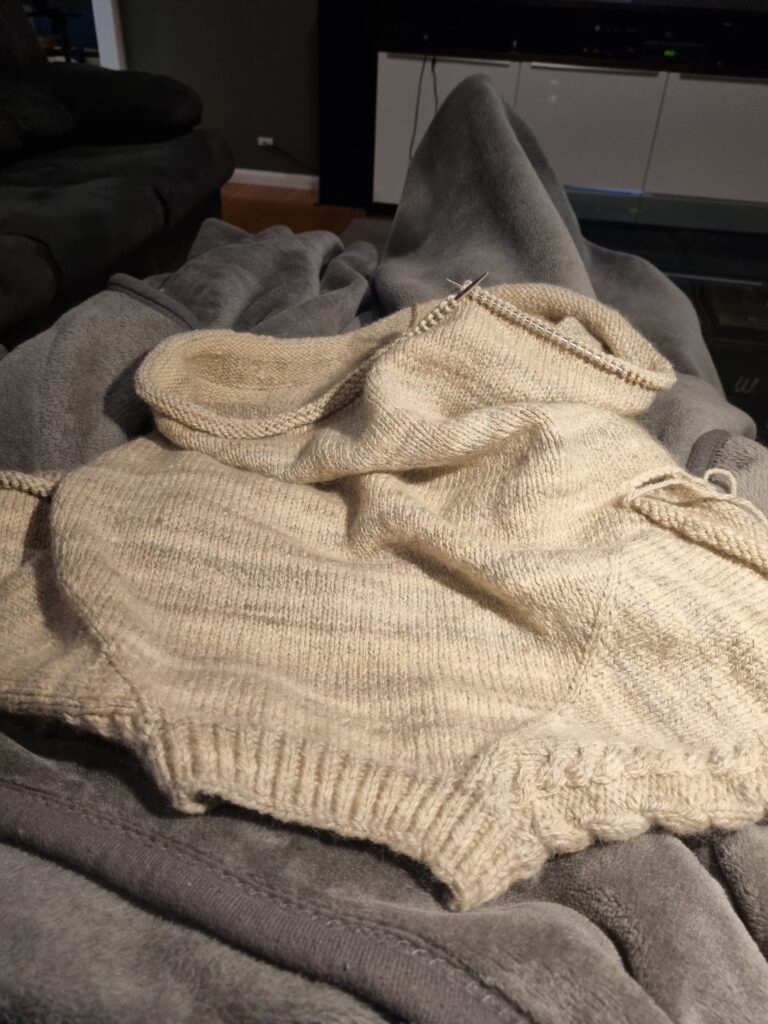
So, I was able to get the ‘gauge’ right by swapping out for different needle sizes, but my yarn was a tiny bit thicker than what the pattern intended, so although the gauge was right, the resulting ‘fabric’ is thicker/denser than intended. My inexperience with knitting (once again) meant that I didn’t realise that this would result in needing significantly more yarn than expected and the jumper has finished up weighing 1.25kg. I mean, I am quite tall and wear bigger sizes than many adult women, but that’s a heavy jumper and I think I am going to need to visit somewhere with snow just so I can wear it!
In hindsight, I could have modified the pattern to suit a bigger stitch gauge (reduced the number of stitches across the width etc) so that the jumper ended up the right size, but allowed for the slightly thicker yarn to create a lighter weight fabric.. but that would have required some serious maths that I was not yet ready for!
So back to my poor judgement about starting to knit the project before I had spun all of the yarn.. The issue of needing more yarn than I realised meant that not once, but twice, I ran out of the coloured ‘tree tops’ fibre and had to order some more. Luckily, I had plenty of fawn alpaca and enough of the plain merino to mix up more batches of fibre and I was able to spin some more – but the problem was that over the period of time that I was doing this, I must have made just the slightest variation to the fibre ‘recipe’ and ended up with different shades of yarn from when I started the project. If I had spun it all, and seen the variation in tone before I started, I could have spread the colour changes through the while project by basically knitting in stripes. That avoids having large blocks of mismatched colour and blends the variations well. I did end up doing this in the sleeves and it helped enough that most people wont notice it, but its funny to look at all of the little ends of the balls of yarn to see just how different the colour ended up from the start to finish of the project.
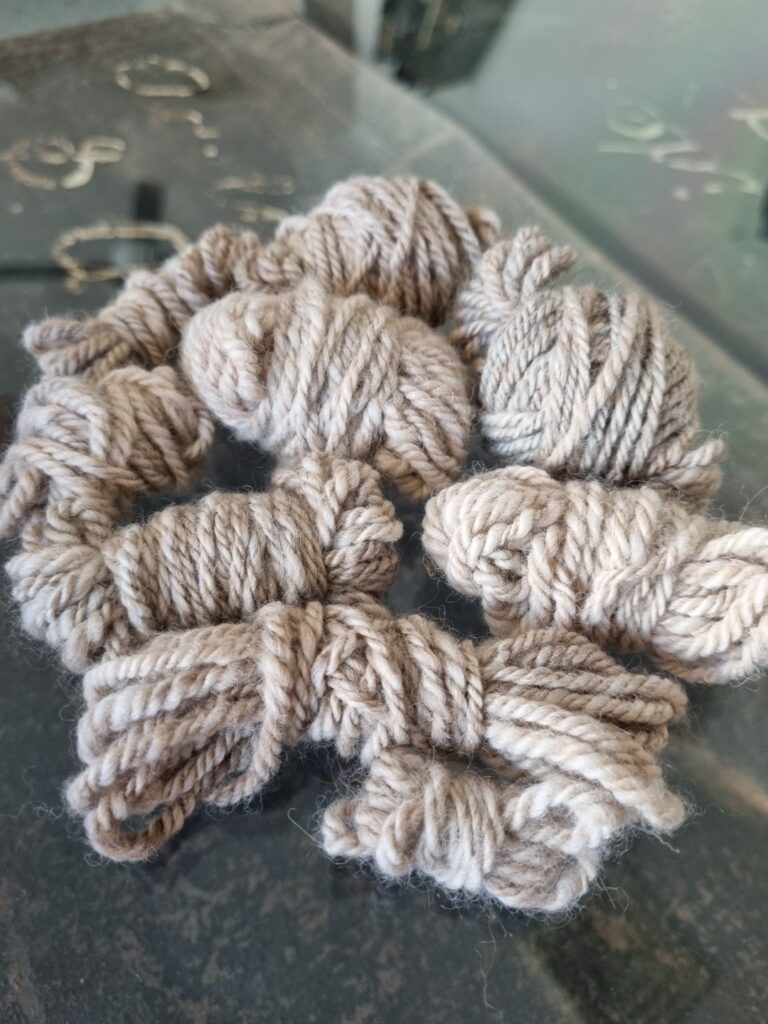
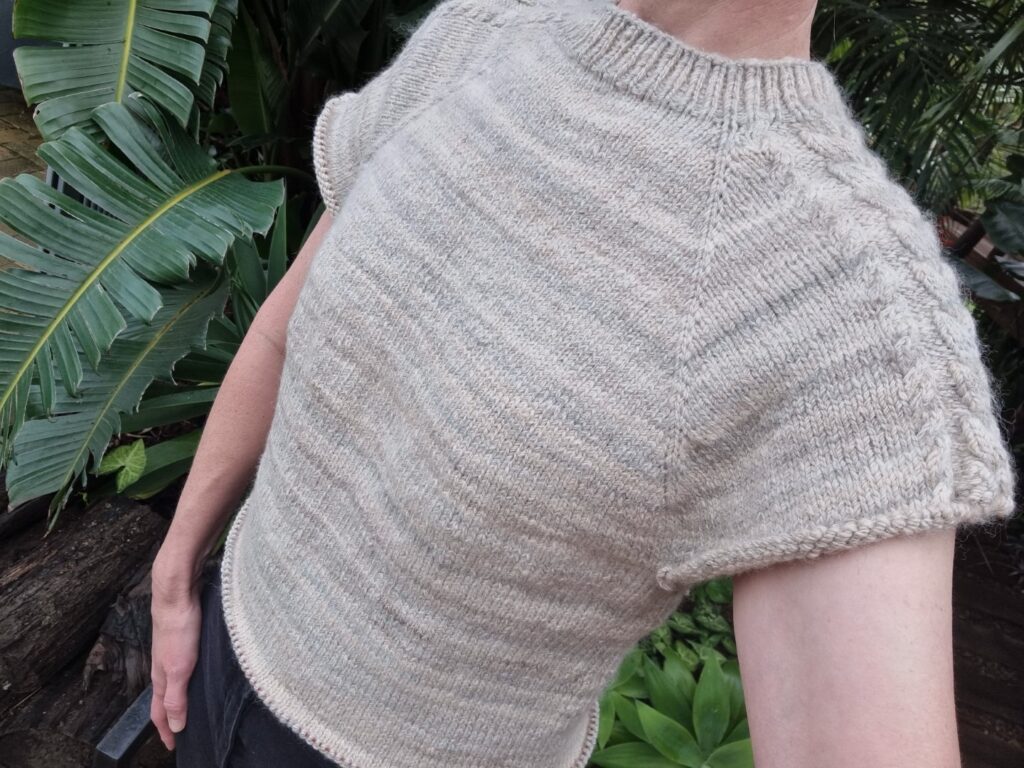
A similar thing has happened with a variation in yarn thickness. There was one batch that I spun a little thicker than the rest.. oops. I had already knitted that into the project before I realised and even though it is only the slightest difference, I can now see and feel it as a band that is across the body just below the armpit height. When I wear it, you can just see it as a ‘fuller’ section compared to the rest. I haven’t washed/blocked this project yet.. so who knows if this will turn out to be more of a problem or less.
I am expecting the yarn to ‘drop’ a little as it has 50% alpaca, so I am hoping it will settle down over time. I have also finished the length of the body and sleeves so that they are comfortable, but not longer than necessary as I am expecting them to get longer, not shorter with wear. Time will tell haha.
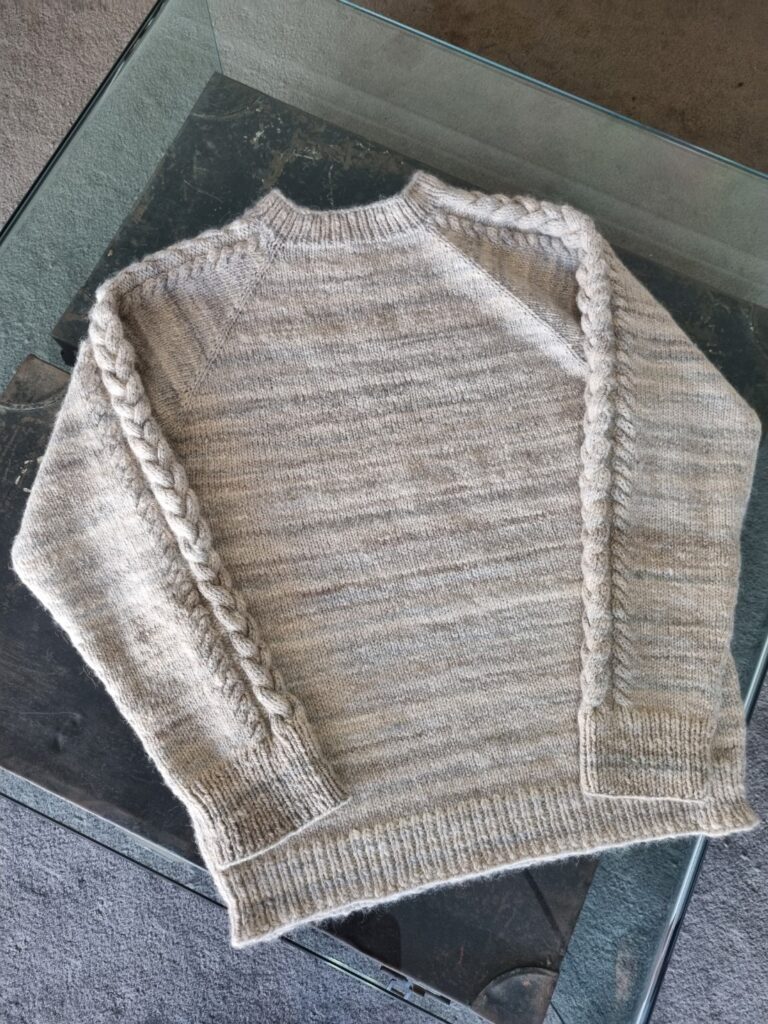
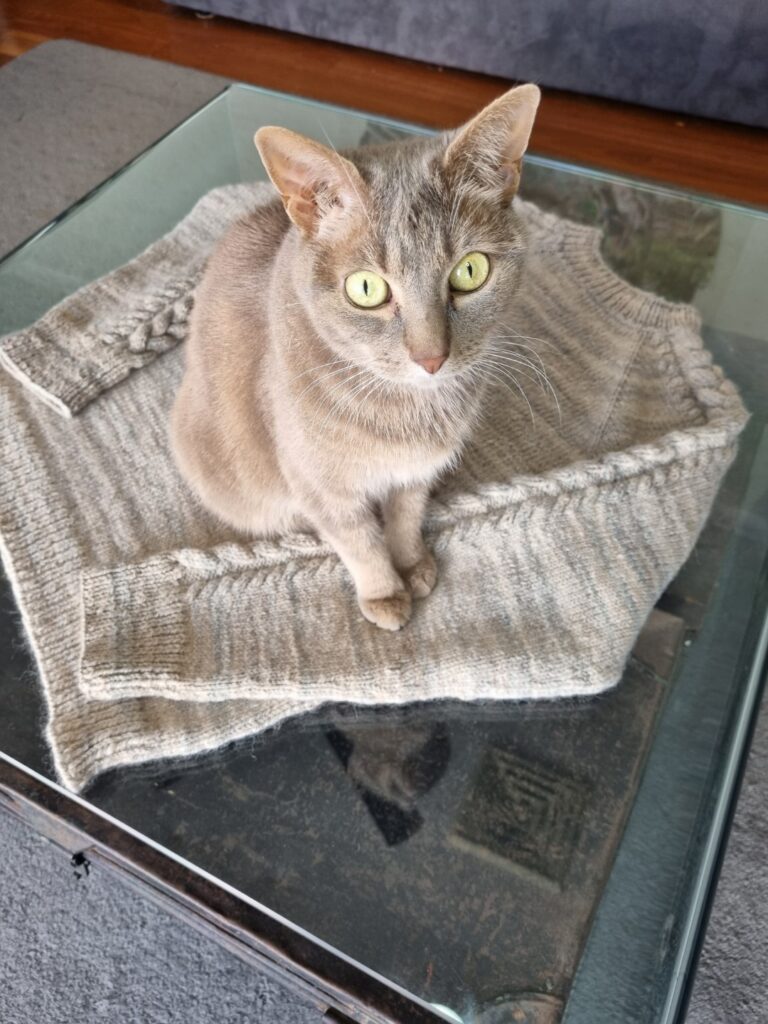
At the end of the day, I am really happy with the result and as a fairly classic style and neutral colour, I hope to get many years of wear out of this. I don’t mind learning form the occasional poor decision, because sometimes you have to go down that path to fully understand that there is a better way of doing things. Maybe someone will read this and learn from my experience to save themselves the hassle too!

I will definitely look forward to wearing this one any time it is cold enough!


